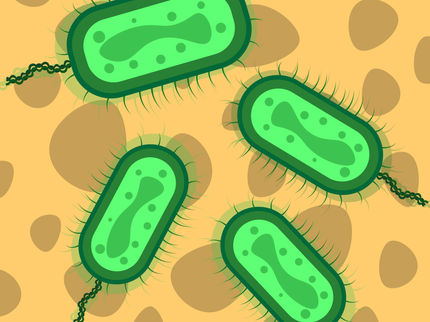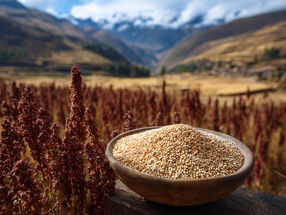How food affects the survival of Listeria in the digestive tract
Survival rate of Listeria higher in fish and cheese than in sausage
A recently published study by the University of Veterinary Medicine, Vienna shows: Listeria in fish and cheese are best protected from stress in the gastrointestinal tract. In sausage, on the other hand, the survivability of these potentially dangerous bacteria is significantly lower. According to the researchers, this is due to the different composition of the tested food matrices. This is precisely where the researchers see a starting point for reducing the risk of Listeria.
Food contaminated with Listeria (L.) monocytogenes is the main cause of listeriosis in humans, a rare but severe infectious disease. Until now, however, it was unclear how different food matrices affects survival and virulence in the gastrointestinal tract. In order to answer this question for the first time, the researchers examined three ready-to-eat foods: soft cheese, smoked salmon and heat-treated non-fermented sausage.
The behaviour of Listeria was examined using a food infection model of the gastrointestinal tract. Nadja Pracser from the Center for Food Science and Veterinary Public Health at Vetmeduni commented: "We observed strain-dependent growth rates, whereby the food matrix had no significant influence, but the type of nutrient source changed the gene expression. However, the respective food clearly influenced the survival of Listeria in the gastrointestinal tract and also the virulence."
Survival rate of Listeria higher in fish and cheese than in sausage
The survival rate of L. monocytogenes was higher in cheese and fish than in sausage, which is due to their lower buffering capacity in the gastrointestinal model. Furthermore, the invasion efficiency in the intestinal epithelial cells (Caco-2 cells) was highest after growth and passage through the model in fish, which may be related to its fatty acid composition. In addition, the food matrices and the conditions in the gastrointestinal tract altered the transcriptional profile of stress-associated and virulence genes. “Passage through the gastrointestinal tract model resulted to the upregulation of 23 stress and 29 virulence genes,” says Nadja Pracser.
Changing the fat and protein content could increase food safety
According to the researchers, changing the fat and protein content in foods could be a possibility to reduce the survivability of L. monocytogenes in the gastrointestinal tract and thus improve food safety. "The results of our study also suggest that the properties of smoked salmon in combination with the conditions in the gastrointestinal tract increase virulence. Future research could uncover the mechanism behind this effect in order to use it for food safety improvements," explains Kathrin Kober-Rychli from the Center for Food Science and Veterinary Public Health at Vetmeduni.
Kathrin Kober-Rychli also emphasizes: “The fact that the food matrix has a direct influence on the behaviour and pathogenic potential of L. monocytogenes underlines the importance of understanding these interactions for food safety and public health.”
Original publication
Nadja Pracser, Andreas Zaiser, Luminita Ciolacu, Franz-Ferdinand Roch, Narciso M. Quijada, Sarah Thalguter, Monika Dzieciol, Beate Conrady, Martin Wagner, Kathrin Rychli; "The type of food influences the behaviour of Listeria monocytogenes in a food-gastrointestinal-infection model"; npj Science of Food, Volume 9, 2025-5-19
Other news from the department science
Most read news
More news from our other portals
See the theme worlds for related content
Topic world Food safety
Food safety is at the heart of the food and beverage industry. It ensures that the food we eat every day is not only nutritious, but also free of harmful contaminants. From field to plate, the industry monitors and regulates every step of the process with strict quality controls, advanced testing methods and continuous research.

Topic world Food safety
Food safety is at the heart of the food and beverage industry. It ensures that the food we eat every day is not only nutritious, but also free of harmful contaminants. From field to plate, the industry monitors and regulates every step of the process with strict quality controls, advanced testing methods and continuous research.































































